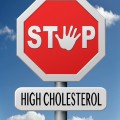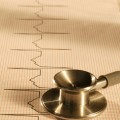Kidney Disease Learn About It, Slow It Down
Good blood glucose control is important for everyone with diabetes because it keeps the whole body healthy, including your kidneys. But diabetes continues to be the most common cause of kidney disease because, for too many people, poor blood glucose control goes unchecked for years. In fact, 20 to 40 percent of people with diabetes will get kidney disease as a result of their diabetes. The good news is that you and your health care provider can do a lot to stay healthy with diabetes, preventing kidney disease or to slow down its progress if the damage has already started.
HOW DO YOU KNOW IF YOU HAVE KIDNEY DISEASE?
Your kidneys filter and remove waste products from your blood. They also help regulate blood pressure and the amount of fluid in your body. When the kidneys do not work well, body waste and fluids can build up. The earliest sign of kidney damage is the presence of small amounts of a protein in your urine known as microalbumin. The American Diabetes Association recommends that people with diabetes have their microalbumin levels checked at least once each year. This is done most commonly with a urine microalbumin test.
Microalbumin test results show the following:
- Levels under 30 micrograms are normal.
- Levels between 30 and 300 micrograms are considered mild kidney disease, or microalbuminuria
- Levels above 300 micrograms are called macroalbuminuria. This means your kidneys are leaking large amounts of protein and that you have greater kidney damage.
If you have not had a microalbumin test to check your kidneys within the last year, ask your health care provider to do one at your next visit.
HOW TO PROTECT YOUR KIDNEYS
Although kidney disease cannot be reversed, there are many things you can do to prevent it or slow its progression. The key is to start early—as soon as you learn that you have kidney disease. Most of the treatments work better early on, when kidney damage is still mild.
Blood glucose: Keep your blood glucose level in your target range. One way to keep an eye on blood glucose levels is with an A1C test. Experts agree that an A1C of 7 percent or less greatly reduces the risk of kidney disease and slows the rate of damage if you already have it; higher levels indicate increased risk for complications.
Blood pressure: High blood pressure can damage your kidneys. To keep your kidneys healthy, keep your blood pressure at or under 130/80 mm/Hg. (Keep in mind that it might take two or more types of blood pressure medicine to reach this blood pressure goal).
Protein intake: Foods that are high in protein are meats, poultry, fish, eggs, dairy, nuts, are high in protein are meats, poultry, fish, eggs, dairy, nuts, dried beans, soy milk and tofu. Meat and dairy products contain the most protein. On average, adults eat about one-fifth (16 to 17 percent) of calories as protein. People rarely eat more than this amount. However, some studies show that a high-protein diet can increase the work of the kidneys. People with diabetes and normal kidney function should keep the amount of protein they eat to no more than one-fifth of their calories. For example, a man who needs 2,000 calories a day should eat no more than about 400 calories, or about 100 grams, of protein a day.
People who have kidney disease, either microalbumin or macroalbumin, may slow down their kidney damage by lowering the amount of protein they eat. The level now recommended for people with microalbumin is actually not low, but moderate. It’s the amount of protein recommended for all Americans—about 45 to 65 grams a day. People with macroalbumin may benefit from slightly decreasing the amount of protein they eat. If you have kidney problems from diabetes, talk with your health care providers about what level of protein is best for you.
HERE ARE A FEW GUIDELINES TO GET YOU STARTED:
- No kidney disease: Keep the amount of meat and high- protein foods you eat, such as dairy, nuts or beans, under 6 ounces for women and 8 ounces for men each day. Many people think these servings are small. For example, a 3-ounce serving of cooked meat is the size of a deck of cards and provides 21 grams of protein.
- Mild kidney disease (microalbumin): Keep the amount of protein you eat under 4 ounces for women and under 6 ounces for men each day.
- Advanced kidney disease (macroalbumin): The amount of protein and other nutrients you eat needs to be carefully planned based on how much kidney function you have remaining.
- Eating too much or too little protein isn’t healthy. So don’t totally cut protein out of your diet. Some protein is needed for good health, and avoiding protein can lead to poor nutrition in people who have kidney disease.
HOW TO CUT BACK ON PROTEIN
Most Americans get more than twice the amount of protein they need. Follow these tips to keep the amount of protein you eat in a healthy range:
- When you eat meat, keep your portion small—about three ounces (cooked) at a sitting.
- Don’t drink milk at every meal. When you do have milk, drink no more than eight ounces per serving.
- Eat one meal each day that is light in protein. For example, you can have a bowl of cereal or oatmeal for breakfast. Or at dinner, try spaghetti with tomato-mushroom sauce or pesto or a vegetable stir-fry without added meat.
- Use recipes that require only small portions of meat for main meals, such as stir-fries, stews, casseroles and kabobs.
- Limit snacks that are high in protein, such as cheese, peanut butter, meat sandwiches, milk, yogurt and nuts.
- Choose fish, poultry, egg and soy products instead of red meats. Some studies suggest that these proteins may be easier on the kidneys.
- Limit high-sodium protein foods. These include processed lunch meats and cheeses; smoked meats, such as bacon; regular canned tuna; hot dogs; breakfast sausage; and fast foods.






